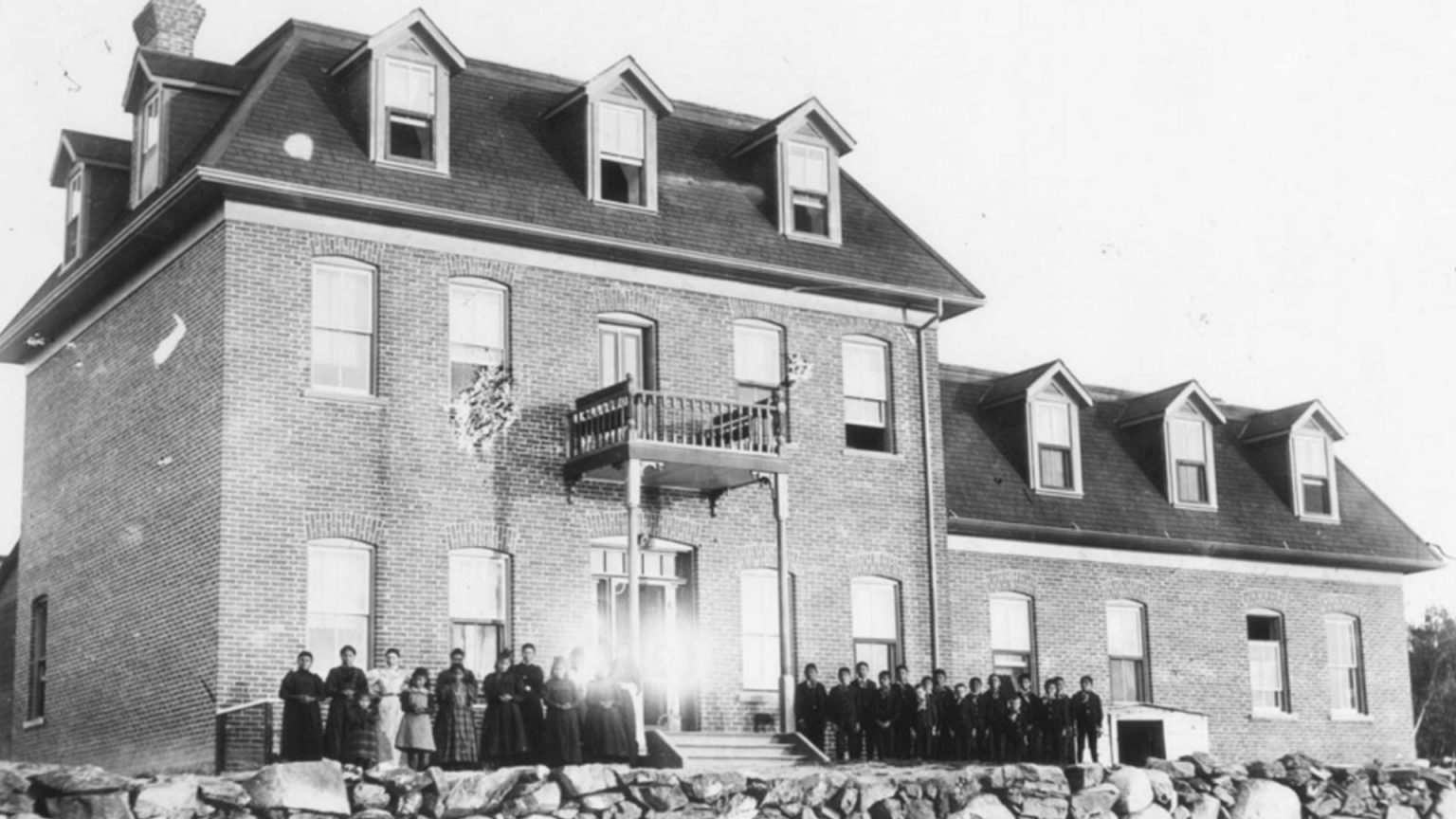
- Details
- By Brian Edwards
**This story pertains to Indian Residential Boarding Schools. For support in First Nations, the Indian Residential School Survivors Society has a 24-hour Crisis Line available: 1-866-925-4419. In the United States, visit The Native American Boarding School Healing Coalition’s list of resources.**
The Wauzhushk Onigum Nation has discovered 171 possible burial sites of children on the grounds of a former Indian residential school in western Ontario.
In an announcement streamed on Facebook, Chief Chris Skead said the Nation’s investigation showed at least 171 anomalies within the cemetery grounds associated with the former St. Mary’s Indian Residential School in Kenora, Ontario. Of the potential burials, only five were marked with graves.
The school was operated by the Roman Catholic Church for 75 years as part of an education system designed to assimilate Indigenous children in Canada and the United States. At least 36 children died at St. Mary’s, according to records from the National Centre for Truth and Reconciliation.
The Wauzhushk Onigum Nation investigation, started in May 2022 by a group of survivors from the school, was conducted by the Nation’s technical, archeology and ground-penetrating radar (GPR) team and informed by survivor testimony, Chief Skead said.
The site has been secured, consistent with Nation cultural and legal protocols, Skead said. The next step is to gain greater certainty of the number of plausible graves at the St. Mary’s site, as well as other suspected sites in the nearby vicinity, including some that are on private lands, he said.
The Nation is pursuing access to the private lands and was scheduled to meet with Canadian government officials as well as leaders from the province of Ontario.
“When it comes to the Crowns — Canada and Ontario — I deem them as foreign governments with their foreign laws,” Skead said. “I am hopeful that these conversations will be productive. Canada and Ontario continue to say they are committed to reconciliation, the truth and healing of our communities. I look forward to hearing if they will continue to honor these commitments.”
During the streaming announcement, Skead reflected on the finding of 215 children in Kamloops in May 2020, noting that the Nation had shown extra care in “doing any work that requires any disturbance of the land in fear of disturbing the children.”
He urged members of the Nation to lean on mental health support, their ways of healing, and each other.
“Much has been done to eliminate us, but we are still here,” Skead said. “As you grieve these findings, remember that we have survived, remember that we are still here, and it has taken our Anishinabe strength — the strength of our ancestors. Use that strength. We will need it to continue to move forward.”
Help us tell the stories that could save Native languages and food traditions
At a critical moment for Indian Country, Native News Online is embarking on our most ambitious reporting project yet: "Cultivating Culture," a three-year investigation into two forces shaping Native community survival—food sovereignty and language revitalization.
The devastating impact of COVID-19 accelerated the loss of Native elders and with them, irreplaceable cultural knowledge. Yet across tribal communities, innovative leaders are fighting back, reclaiming traditional food systems and breathing new life into Native languages. These aren't just cultural preservation efforts—they're powerful pathways to community health, healing, and resilience.
Our dedicated reporting team will spend three years documenting these stories through on-the-ground reporting in 18 tribal communities, producing over 200 in-depth stories, 18 podcast episodes, and multimedia content that amplifies Indigenous voices. We'll show policymakers, funders, and allies how cultural restoration directly impacts physical and mental wellness while celebrating successful models of sovereignty and self-determination.
This isn't corporate media parachuting into Indian Country for a quick story. This is sustained, relationship-based journalism by Native reporters who understand these communities. It's "Warrior Journalism"—fearless reporting that serves the 5.5 million readers who depend on us for news that mainstream media often ignores.
We need your help right now. While we've secured partial funding, we're still $450,000 short of our three-year budget. Our immediate goal is $25,000 this month to keep this critical work moving forward—funding reporter salaries, travel to remote communities, photography, and the deep reporting these stories deserve.
Every dollar directly supports Indigenous journalists telling Indigenous stories. Whether it's $5 or $50, your contribution ensures these vital narratives of resilience, innovation, and hope don't disappear into silence.
 The stakes couldn't be higher. Native languages are being lost at an alarming rate. Food insecurity plagues many tribal communities. But solutions are emerging, and these stories need to be told.
The stakes couldn't be higher. Native languages are being lost at an alarming rate. Food insecurity plagues many tribal communities. But solutions are emerging, and these stories need to be told.
Support independent Native journalism. Fund the stories that matter.
Levi Rickert (Potawatomi), Editor & Publisher
